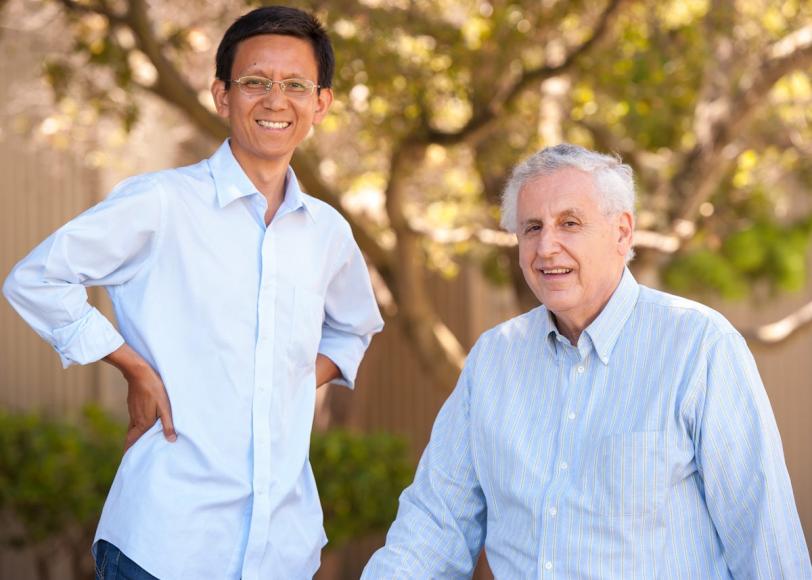Taking Some Guesswork Out of High-Energy Physics
SLAC theorist Stan Brodsky and his collaborator Xing-Gang Wu of Chongqing University have just made the lives
By Lori Ann White
SLAC theorist Stan Brodsky and his collaborator Xing-Gang Wu of Chongqing University have just made the lives of high-energy particle theorists the world over a bit easier. They've demonstrated a way to literally take some of the guesswork out of predictions from quantum chromodynamics (QCD). QCD is the theory explaining the behavior of quarks, which in groups of three form protons and neutrons, and gluons, which carry the strong force that "glues" the quarks together.
In the realm of QCD, interactions are the thing. It's not enough to know which quarks make up a particle; just as important is their dynamics: how those quarks bounce off each other and what messages the gluons carry between them as they jostle about. Eavesdropping on quarks is not easy.
To make matters worse, "virtual" particles from the effects of quantum field theory keep popping in and out of existence, changing the discussion. It's as if you're trying to talk to a friend in the midst of a crowd of chatty strangers; snippets of their chatter keep floating over to you and your friend, some from close by – some from farther away – redirecting your train of thought.
Fortunately, thanks to the property of "asymptotic freedom," the closer together the particles, the quieter the conversation. All that extra chatter has a real effect in QCD, and up until now, theorists could only guess as to how many of the interlopers were in an interaction, how loud they were and how they changed the conversation.
In a paper published last week in the journal Physical Review Letters, Brodsky and Wu demonstrated the "Principle of Maximum Conformality," (PMC) a mathematical technique that enables theorists to accurately set the number of virtual chatterboxes and their loudness. The critical variable that controls the effects of quantum corrections is called the "renormalization scale of the QCD running coupling," which, in this analogy, would equate to where the volume dial is set.
According to Brodsky and Wu, PMC has the important feature of giving the same prediction independent of theoretical conventions used to define the QCD coupling. In other words, theorists hear the same conversation no matter where they initially set the volume.
Brodsky and Wu tested their technique on a puzzle that theorists have been scratching their heads over since 2010. The CDF collaboration at Fermilab reported that top quark-anti-top quark pairs spraying out of collisions at the Tevatron didn't precisely follow the trajectories predicted by theorists. The original QCD calculations were based on a guess for the renormalization scale.
However, using PMC to set the scale removed the discrepancy, predicting just what the Tevatron experimentalists observed (within acceptable amounts of error). The PMC method was developed in collaboration with Leonardo di Giustino of the University of Parma, based on earlier work by Brodsky with collaborators G. Peter Lepage of Cornell University and Paul Mackenzie of Fermilab.
Brodsky and Wu said that now that PMC has been demonstrated to work, it can be used to eliminate a major systematic uncertainty in QCD predictions, allowing the theory to be tested more precisely. Their method can also be applied to quantum electrodynamics, the quantum theory explaining the behavior of electrically charged particles.
Even more important, they say, PMC can increase the sensitivity of collider and other experiments to new physics beyond the Standard Model.
"When we use this technique we can have more confidence in our predictions," Brodsky said. "And when we find a discrepancy, it may really expose new physics."

(Photo by Matt Beardsley)